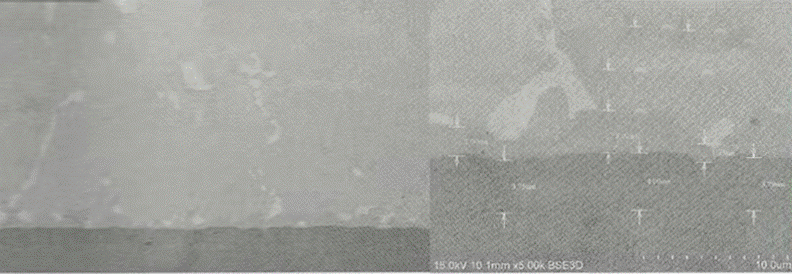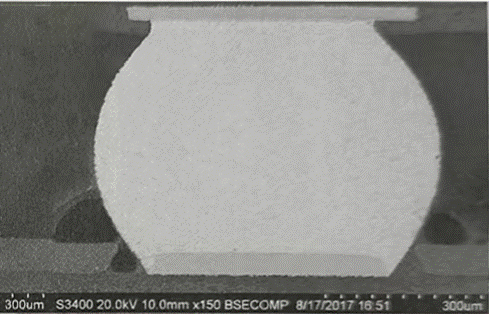BGA mixing process misconception - incomplete lead phase diffusion-Shenzhen Fitech

BGA mixing process misconception - incomplete lead phase diffusion
There are misconceptions about incomplete lead phase dispersion in the BGA mixing and assembly process. With the global popularity of lead-free processes, most BGA devices are already using lead-free processes, but due to special requirements some companies still use leaded processes for soldering. For products that do not involve BGA devices, the process can be operated exactly as a leaded process. Only the leaded process with lead-free BGAs is a true mixed assembly process. There are different views in the industry on this.
Viewpoint 1: Replacement of the tin ball school (SJ school)
This view is that lead-free BGAs must be replaced when used in leaded processes, i.e. the original lead-free solder balls are removed and replaced with leaded balls, which are properly cleaned before use.
This view has the advantage of allowing a complete implementation of leaded processes, but also has the disadvantages of:
1) Removal of the lead-free solder balls and implantation of leaded solder balls can result in two thermal shocks which can affect the life of the device;
2) the de-balling process may lead to dislodgement or damage to the BGA pads;
3) The number of solder balls in BGA devices is now extremely high and replacing the balls increases the defective implantation rate; if the balls are implanted manually, it can be time consuming and labour intensive. Worse still, if a particular ball is defectively implanted and there is no effective test tool for BGA devices, it will increase the soldering connection troubles.
Viewpoint 2: No replacement of the tin ball faction (XJ faction)
The XJ school view is that there is no need to replace the solder balls and that soldering is done directly with leaded solder paste, known as the hybrid process. the XJ school hybrid process is considered mainstream, but within it there are two specific subsections of view.
One view is that when soldering with leaded solder paste in a lead-free BGA, there is no need to worry about whether the lead-free solder balls are melting and the process can be followed exactly as it is with lead. This is because the high lead BGA solder balls do not melt, only the solder paste melts and wets the balls to complete the solder. The reliability of this soldering method also meets the requirements of Class 3 products.
Another view is that the lead-free BGA solder balls should be completely melted, but to reduce the thermal shock effects on the device body, the soldering temperature profile should be between the lower limit of the lead-free process and the upper limit of the leaded process. 228°C to 232°C is recommended for BGA solder joints in the hybrid process in IPC-7350, and in practice, the temperature difference between the internal and external joints of the same BGA can be more than 4°C. The recommended soldering temperature profile for this hybrid process, i.e. the melting time is within 60 to 90 seconds. The lead-free BGA solder balls have a limited melting time and the heat they are subjected to, which can result in the so-called uneven diffusion of the lead phase of the hybrid process.

Figure 1. Lead phase diffusion into the solder ball for the ENIG hybrid process
Uniform lead phase diffusion and solder joint reliability
The phenomenon of uneven lead phase diffusion means that the lead element in the already melted leaded solder paste starts to diffuse into the solder ball after the BGA lead-free solder ball has melted and the lead is inside the solder paste at the bottom, as shown in Figure 1. And lead phase diffusion uniformity means that on the basis of complete melting and soldering completion, more heat and soldering time is given so that the metal atoms are mixed more evenly and the lead phase diffusion is uniform. The uniform lead phase diffusion will produce a thicker IMC layer at the same time and some of the IMC overgrowth may lead to solder joint failure due to the inability of the substrate to carry it.

Figure 2. Uniform mixing process for lead phase
So, does uniform lead phase dispersion mean stronger and more reliable solder joints? Or does the concentration of the lead phase on one side of the PCB make for a more reliable solder joint? Logically, a leaded solder joint is stronger than a lead-free solder joint, and the uneven spread of the lead phase does not reduce the strength and reliability of the joint.
It is important to note that the reliability of a solder joint is influenced by a number of factors, including the soldering temperature profile, the soldering time and the properties of the solder material, whether the lead phase diffusion is uniform or uneven. At the same time, control of the soldering process, quality inspection and reliability testing are also important aspects of ensuring the reliability of solder joints.
In practice, if the reliability of the solder joint meets the requirements and no solder defects or faults are found, then there is no need to worry too much about the uniformity or non-uniformity of the lead phase spread. However, if a product has a faulty or defective solder joint, uneven lead phase dispersion can be an indicator of the problem.

















 Back to list
Back to list



